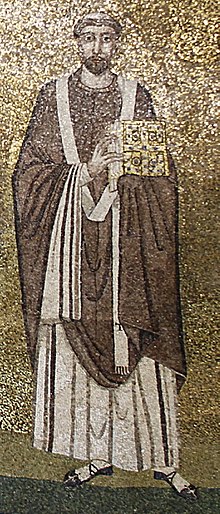
The Ostrogothic Papacy was a period from 493 to 537 where the papacy was strongly influenced by the Ostrogothic Kingdom, if the pope was not outright appointed by the Ostrogothic King. The selection and administration of popes during this period was strongly influenced by Theodoric the Great and his successors Athalaric and Theodahad. This period terminated with Justinian I's (re)conquest of Rome during the Gothic War (535–554), inaugurating the Byzantine Papacy (537–752).
According to Howorth, "while they were not much interfered with in their administrative work, so long as they did not themselves interfere with politics, the Gothic kings meddled considerably in the selection of the new popes and largely dominated their election. Simony prevailed to a scandalous extent, as did intrigues of a discreditable kind, and the quality and endowments of the candidates became of secondary importance in their chances of being elected, compared with their skill in corrupting the officials of the foreign kings and in their powers of chicane."[1] According to the Catholic Encyclopedia, "[Theodoric] was tolerant towards the Catholic Church and did not interfere in dogmatic matters. He remained as neutral as possible towards the pope, though he exercised a preponderant influence in the affairs of the papacy."[2]
- ^ Howroth, 1913, p. 406.
- ^ Herbermann, Charles, ed. (1913). . Catholic Encyclopedia. New York: Robert Appleton Company.